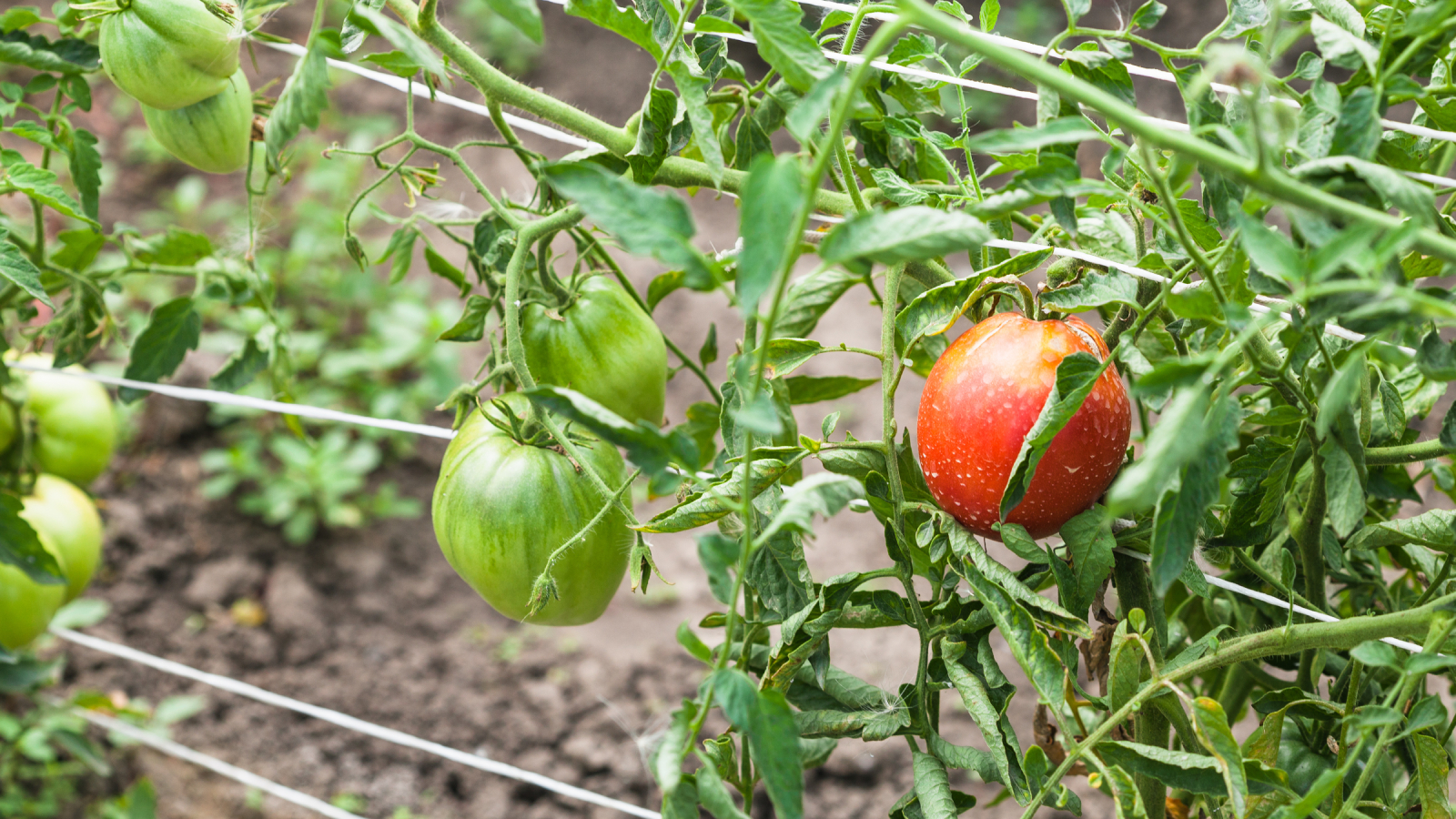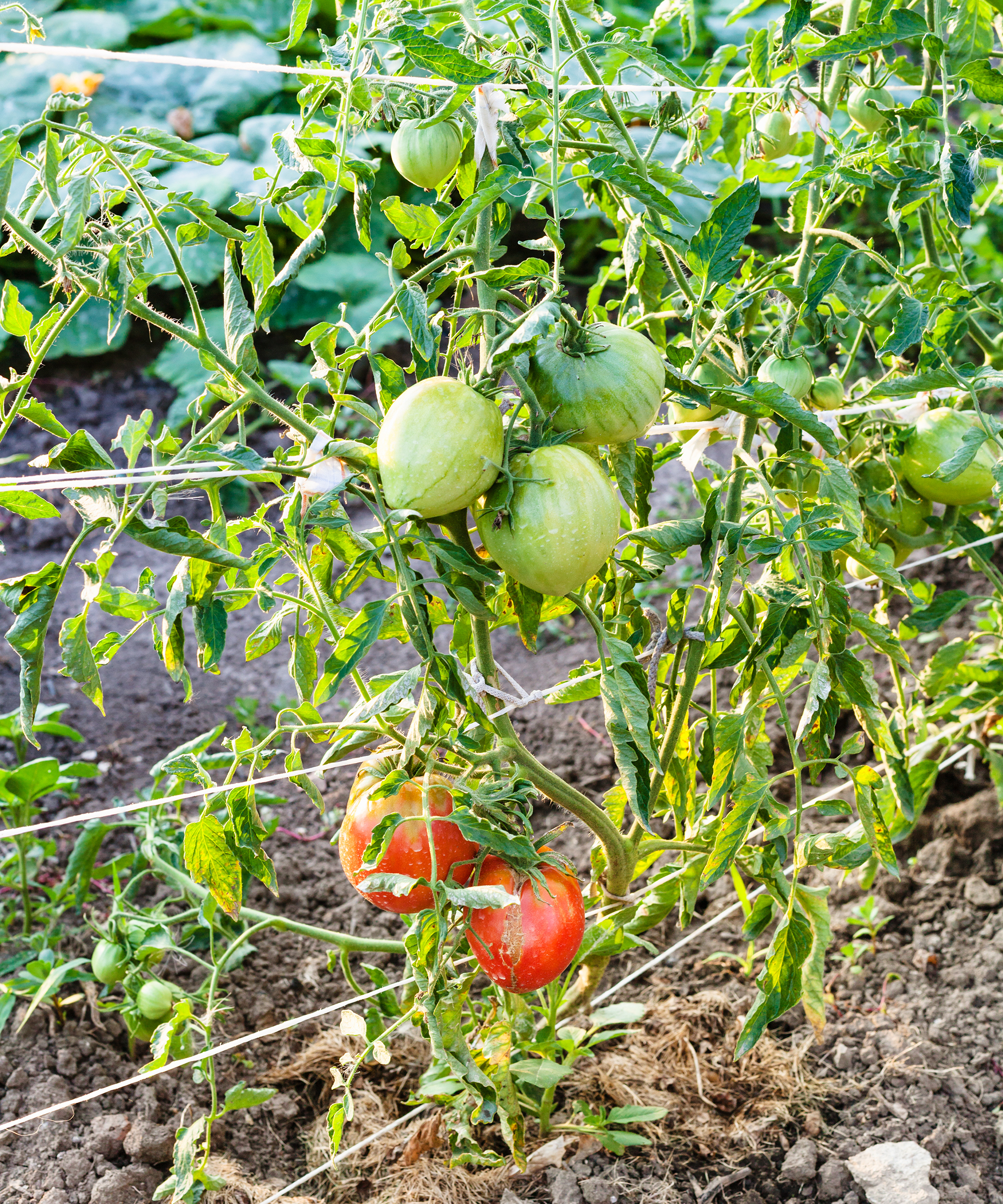The Florida Weave: Make Trellising Tomatoes Easy With This Simple Method
Are you looking for an easy, low-tech way to trellis your tomatoes? Look no further that the Florida weave. Here's how to use this method in your own garden.


Some of the best tasting tomatoes grow from vines. These semi-determinate to indeterminate fruits have no stopping point at the ends of the stems. This leads to tangled drooping stems if they are not supported. One successful way to make sure the fruit is above the soil is by using the Florida weave trellis. The Florida weave is a common field technique for trellising tomatoes. This method keeps vines upright, and fruit away from ground contact.
Florida weave tomatoes produce better fruit that’s easier to pick and seems to suffer less rot. The system is also called short stake or basket weave. The method works for both determinate and indeterminate tomato varieties, although the latter may need to be trimmed, or taller stakes must be used. All that is needed are stakes about 8 feet (2.5 m) long and some twine.
What Is the Florida Weave?
The Florida weave trellis is a low tech way of holding plants upright with the use of stakes. Professional growers use this method and claim to have larger fruit with fewer blemishes. The way the fruit and vines are supported also allows for better coverage of fungicides and other sprays.
This type of staking system also makes it easier to harvest the fruit. Florida trellising is very adaptable to the home grower and makes managing several tomato plants much easier. With this type of support strategy, the plants are held up by layers of twine on each side. More twine can be added as the plants grow.

What You'll Need
The most simple Florida weave tomato system requires rough wooden stakes. Smooth material will not allow for the adherence of the twine, which can slip. If reusing stakes from the previous year, immerse them in a 5 percent bleach solution to prevent carry over of disease.
Metal stakes, rebar, or french posts will make the system stronger, but the twine will need to be double wrapped tightly. For additional support, a T-post installed at each end of the row will enhance the strength of the system and prevent tipping as tension increases.
The stakes need to be as tall as the plant is expected to be. In determinate plants this may be 4-5 feet (1.2-1.5 m), while indeterminate varieties may need lengths of up to 8 feet (2.5 m). While twine is easily sourced, the material also could be rope, synthetic twine, or other malleable, lengthy material. The stakes need to be driven into soil to a depth of 1 foot (0.3 m).
Gardening tips, videos, info and more delivered right to your inbox!
Sign up for the Gardening Know How newsletter today and receive a free copy of our e-book "How to Grow Delicious Tomatoes".
How to Florida Weave Tomatoes
Once the stakes are in place and sturdily buried, plant the tomatoes at each post. When the plants are 12 inches (30.48 cm) tall, it is time to train them.
- Remove all the axillary suckers up to the first flower cluster on the main stem. This light pruning will increase air flow and harvesting ease, and will make the tying process more efficient.
- Begin tying the plants. Start the twine 2 inches (5 cm) below the first flower cluster. Tie the twine to the first post.
- Loop the string around the post, alternating the direction at each post. When the last post is reached, return back the other direction to the beginning.
- Be sure to keep tension as you go. The plants should be sandwiched between 2 separate woven lengths of twine.
- After a week, add another layer of twine 6 inches (15 cm) above the previous. Continue adding twine as needed while the plant grows.

Bonnie Grant is a professional landscaper with a Certification in Urban Gardening. She has been gardening and writing for 15 years. A former professional chef, she has a passion for edible landscaping.
-
 8 Perfect Flowers To Plant With Tomatoes To Boost Yields & Banish Pests
8 Perfect Flowers To Plant With Tomatoes To Boost Yields & Banish PestsDon’t forget flowers when choosing companion plants for your tomato beds or pots. These pretty, fragrant blooms add beauty but are also highly beneficial.
By Mary Ellen Ellis
-
 Want The Longest Lasting Hydrangea Flowers? Grow These 8 Panicle Hydrangea Varieties
Want The Longest Lasting Hydrangea Flowers? Grow These 8 Panicle Hydrangea VarietiesFor ornamental shrubs that deliver the longest flowering seasons with plush blooms and delicate hues, these panicle hydrangea varieties are essential in your yard
By Tonya Barnett